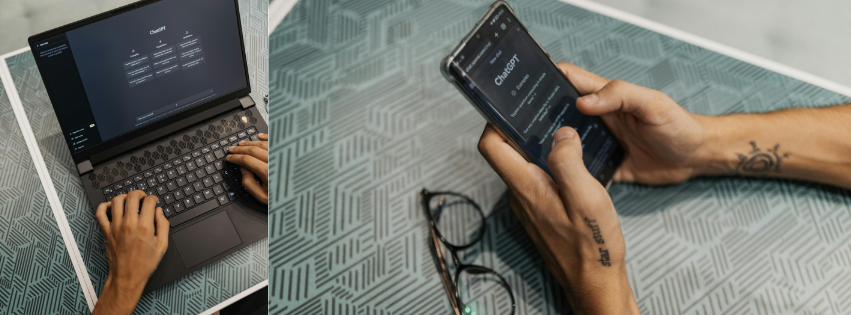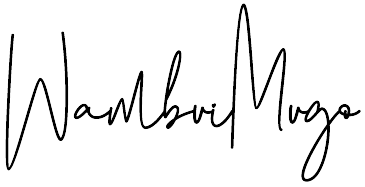How to Use CHATGPT for Copywriting (with Examples)

As a freelance copywriter, you juggle creativity, tight deadlines, and ever-changing client demands. Some days, the words flow effortlessly; other days, you’re stuck staring at a blank page, willing inspiration to strike.
What if you had a tool that could speed up your workflow, spark fresh ideas, and help you refine your copy—all without replacing your creative touch?
Meet ChatGPT.
This AI-powered writing assistant isn’t here to take over your job—it’s here to supercharge your creativity. Think of it as your brainstorming buddy, research assistant, and first-draft generator, all in one.
Need a compelling ad headline? ChatGPT has you covered. Struggling to craft an engaging email? It can help with that too.
But here’s the key: ChatGPT is only as good as the person using it. The best copywriters don’t just copy and paste—they use AI strategically to enhance their writing, not replace it.
In this guide, we’ll break down exactly how you can use ChatGPT to write faster, smarter, and more effectively, complete with real-world examples you can apply today.
Ready to take your copywriting game to the next level? Let’s dive in.
Understanding ChatGPT for Copywriting
Before we dive into the practical ways you can use ChatGPT, let’s get clear on what it is—and, more importantly, what it isn’t.
What is ChatGPT?
ChatGPT is an AI-powered writing assistant developed by OpenAI. It’s trained on vast amounts of text data, allowing it to understand context, generate ideas, and create human-like responses based on the prompts you give it.
Think of it as a highly efficient brainstorming partner that can help you speed up your writing process while keeping your creativity intact.
Why Should Copywriters Use ChatGPT?
As a freelance copywriter, your time is money. The faster and more efficiently you produce high-quality content, the more you can scale your business. ChatGPT helps by:
- Generating fresh ideas – Need a dozen ad headlines or blog post angles? ChatGPT can provide instant inspiration.
- Overcoming writer’s block – Staring at a blank page? Get a rough draft in seconds and refine it from there.
- Enhancing productivity – Create content faster without sacrificing quality.
- Refining tone and messaging – Adjust copy to match different brand voices effortlessly.
- Optimizing for SEO – Get keyword-rich content suggestions to improve search rankings.
- Summarizing research – Save hours on research by getting quick, digestible insights.
The Smart Way to Use ChatGPT
AI is a tool, not a replacement for human creativity. To get the best results:
- Give clear, specific prompts – The more details you provide, the better the output.
- Edit and refine – AI-generated text is a draft, not a final version. Your expertise is what makes it shine.
- Use it as a starting point – ChatGPT can give you ideas and structure, but your voice and strategy make the copy compelling.
Now that we’ve covered the basics, let’s break down exactly how you can use ChatGPT for different types of copywriting.
How to Use ChatGPT for Copywriting
As a freelance copywriter, you’re always juggling multiple projects and tight deadlines. ChatGPT can be a game-changer—helping you produce high-quality content faster while maintaining your unique voice. The key is using ChatGPT as a tool to enhance your creativity, not replace it. Here’s how to seamlessly integrate it into your copywriting process,
1. Social Media Posts
Social media is all about engagement and personality, and ChatGPT can help you create posts that truly resonate with your audience. Whether it’s for Instagram, LinkedIn, or Twitter, you can generate content that fits your brand’s tone and voice while also aligning with your marketing goals.
Smart Prompt Examples:
- “Write an Instagram caption for a freelance graphic designer showcasing their latest logo design project—keep it fun and creative.”
- “Create a Twitter post for a digital marketer celebrating the success of their latest campaign. Include a CTA for others to book a consultation.”
- “Generate five LinkedIn post ideas for a freelance writer sharing tips on building a personal brand.”
2. Ad Copy
In freelancing, selling your services effectively is crucial. Whether you’re running a Facebook ad or writing a Google ad for your own business, ChatGPT can help craft powerful, results-driven copy.
Smart Prompt Examples:
- “Write a Facebook ad for a freelance web developer offering a 20% discount on website redesign services.”
- “Create a Google ad for a freelance photographer specializing in corporate headshots—focus on high-end clients.”
- “Write a compelling LinkedIn ad for a freelance project manager promoting a free 30-minute consultation.”
3. Blog Writing
Blogging can be a fantastic way to attract new clients and establish yourself as an expert. ChatGPT can help you brainstorm content ideas, create outlines, or even write entire blog posts with SEO in mind.
Smart Prompt Examples:
- “Create an outline of a blog post about how freelancers can effectively negotiate their rates with clients.”
- “Write an introduction to a blog post on why content marketing is essential for freelancers looking to scale their business using a conversational style.”
- “Create an SEO-friendly blog post title for a freelancer’s guide to time management with an energetic tone.”
4. Headlines and CTAs
Headlines and CTAs are the first things your audience sees—and they need to grab attention immediately. ChatGPT can generate strong options for both, helping you fine-tune them for maximum impact.
Smart Prompt Examples:
- “Generate 3 short, catchy headline ideas for a blog post about the best freelance tools for productivity.”
- “Write a CTA for a landing page promoting a freelancing e-book. Make it action-driven and persuasive.”
- “Give me 5 variations of a subject line for an email campaign offering a free one-hour consultation for freelancers in the tech industry.”
5. Email Campaigns
Email campaigns are essential for staying in touch with your audience and converting leads into clients. Whether you’re launching a special offer or sharing valuable content, ChatGPT can help you write persuasive emails that resonate with your target market.
Smart Prompt Examples:
- “Write an email to a freelancer offering a limited-time discount on website copywriting services. Focus on urgency and value.”
- “Craft a welcome email for new subscribers to a freelancing resource newsletter. Keep it warm, personal, and inviting.”
- “Write a follow-up email for a freelancer who hasn’t responded to a project proposal. Be polite but firm in asking for an update.”
6. Research and Content Ideation
Researching topics and generating fresh content ideas can be time-consuming, but ChatGPT can help you gather insights and inspire new topics that are highly relevant to your audience.
Smart Prompt Examples:
- “Summarize the latest trends in freelance marketing for 2024—highlight key statistics and strategies.”
- “List 10 blog post ideas for a freelance content writer focusing on SEO and copywriting tips.”
- “Give me five research-backed reasons why freelancers should use a project management tool.”
7. Repurposing Content
Repurposing existing content is a smart way to maximize your content creation efforts. ChatGPT can help transform your blogs, social media posts, and more into fresh formats that fit various platforms.
Smart Prompt Examples:
- “Turn this blog post into a LinkedIn article for freelancers looking to grow their client base: (paste text).”
- “Rewrite this Instagram post for a blog post targeting freelance marketers. Use a catchy tone.”
- “Create a short YouTube script from this blog on tips for freelancers working remotely using simple, compelling language.”
8. A/B Testing
Testing different versions of your copy can help you discover which messaging resonates best with your audience. ChatGPT can easily generate alternative options to test for performance.
Smart Prompt Examples:
- “Write two variations of a headline for a landing page promoting freelance website design services. One should focus on speed, the other on quality.”
- “Create two versions of a subject line for a freelancer’s email promoting a free guide on building a personal brand.”
- “Give me two versions of an ad copy for a freelance copywriter offering writing services to small businesses.”
9. Editing and Tone Alignment
Copywriting requires you to strike the right tone every time, and ChatGPT can help you adjust your tone to fit different types of content or audiences. Whether you’re going for friendly, professional, or authoritative, ChatGPT can make those changes seamlessly.
Smart Prompt Examples:
- “Rewrite this email to sound more casual and friendly: [paste text].”
- “Make this service description sound more sophisticated and high-end—this is for a luxury brand.”
- “Edit this client proposal to sound more confident and assertive, while still being
Limitations of Using ChatGPT for Copywriting and Content Creation
ChatGPT is an excellent tool, but it’s not without its challenges. Let’s break down some of the main limitations and how to handle them without losing your edge.
1. Struggles with Accuracy and Updated Information
One thing you’ll notice right away is that ChatGPT doesn’t know what’s going on in the world right now. It’s not able to pull in the latest data or trends, which can be an issue when you’re writing about something fast-moving like freelancing or digital marketing.
- Do a quick fact-check: While ChatGPT’s great for starting drafts or brainstorming, always verify the numbers, trends, or facts from reliable sources like industry reports or news outlets.
- Add your own take: ChatGPT can give you structure, but bring in your personal knowledge to make sure the content’s up-to-date.
- Stay informed: Follow blogs and updates from trusted sources so you can fill in the gaps where ChatGPT falls short.
Example Prompt:
- “Write a blog post about the rise of freelance content creation in 2024. Make sure to reference stats from Forbes and Upwork.”
This ensures the content stays relevant, with up-to-date facts that ChatGPT can’t access.
2. Risks of Plagiarism and Repetitive Phrasing
ChatGPT can sometimes generate content that’s a little too familiar—think of phrases or structures that pop up across the web. As a freelancer, plagiarism is the last thing you want, and repetitive phrasing can hurt your SEO or bore your audience.
- Run it through plagiarism checkers: Tools like Grammarly, Copyscape, or Quetext can help you catch any accidental overlaps.
- Put your spin on it: After ChatGPT provides a draft, rephrase it to fit your voice and make it unique.
- Change up the phrasing: ChatGPT may give you a formulaic sentence—don’t be afraid to rewrite it to make it sound fresh.
Example Prompt:
- “Rewrite this product description to make it sound more conversational and avoid generic phrases like ‘best deal’ or ‘limited time offer’.”
This ensures your copy is one-of-a-kind and doesn’t feel robotic.
3. Lack of Emotional Depth
ChatGPT can certainly craft engaging copy, but it often lacks that deep emotional resonance that makes readers feel something. Whether you’re writing a sales page, an email, or a blog post, you need to connect with your audience on a personal level—and ChatGPT can’t always nail that.
- Add your personal touch: Use ChatGPT as a skeleton and then infuse it with empathy or humor, depending on what feels right for your audience.
- Give examples: ChatGPT will give you the framework, but real-world stories or personal anecdotes can make the content truly hit home.
- Try different tones: Play around with different emotional angles. For example, if you’re writing an email to freelancers, try to sound supportive and motivating rather than just informative.
Example Prompt:
- “Write an email offering a discount for a freelance course. The tone should be encouraging and uplifting, with a focus on how this deal can help freelancers grow their business.”
This helps inject the kind of emotional appeal that turns a simple offer into a connection.
4. Limited Creativity and Unique Ideas
ChatGPT pulls from existing patterns, which means it doesn’t always generate game-changing ideas. As a freelancer, you need to stand out—and that requires fresh, unique perspectives that resonate with your audience.
How to Work Around It:
- Use ChatGPT as a springboard: Ask it for ideas, then build on them. Let it handle the routine stuff, and you can add the creative twist.
- Narrow the focus: ChatGPT gives broad ideas, but you’ll want to zero in on a specific angle or niche that sets you apart.
- Look beyond AI: Use articles, books, podcasts, and your personal experiences to bring in those new ideas ChatGPT can’t generate.
Example Prompt:
- “Generate 10 blog post ideas for a freelance writer covering topics about productivity. Avoid topics like ‘time management’ or ‘how to stay motivated’—give me fresh takes.”
This ensures you get ideas that go beyond the typical freelance content, with room for your creativity to shine.
5. Overuse of Clichés and Generic Phrases
ChatGPT tends to rely on common phrases and overused expressions, especially when working with popular topics like freelancing or business advice. For someone in the freelance world, standing out from the crowd is key, and that means avoiding the same tired language that’s everywhere.
- Ask for variety: If you notice a phrase you don’t like, ask ChatGPT for alternatives. It can generate multiple versions that might feel fresher.
- Rewrite and refine: Use the generated content as a base, but personalize and reword it until it feels right.
- Get specific: Replace those broad statements with concrete examples or actionable tips tailored to your specific audience.
Example Prompt:
- “Write a headline for a blog post about freelancing mistakes. Avoid using the words ‘ultimate’ or ‘top 10.’ Make it more creative and specific.”
This encourages ChatGPT to think outside the box and keeps your copy from sounding like everyone else’s.
Blend Your Creativity with ChatGPT’s Power
ChatGPT can certainly help with content generation, but your authentic voice and creativity are what turn a draft into something memorable. While ChatGPT handles the groundwork—like brainstorming and structuring—you’re the one who brings the spark. As a freelancer, it’s your unique perspective that captures attention and keeps readers hooked.
Use ChatGPT to streamline your process, but always refine and adapt the content to your audience. The magic happens when you merge AI’s speed with your expertise, creating copy that’s not only efficient but also engaging and deeply resonant. Want to learn more? Explore the Freelance Hub for expert courses to boost your freelance career.











